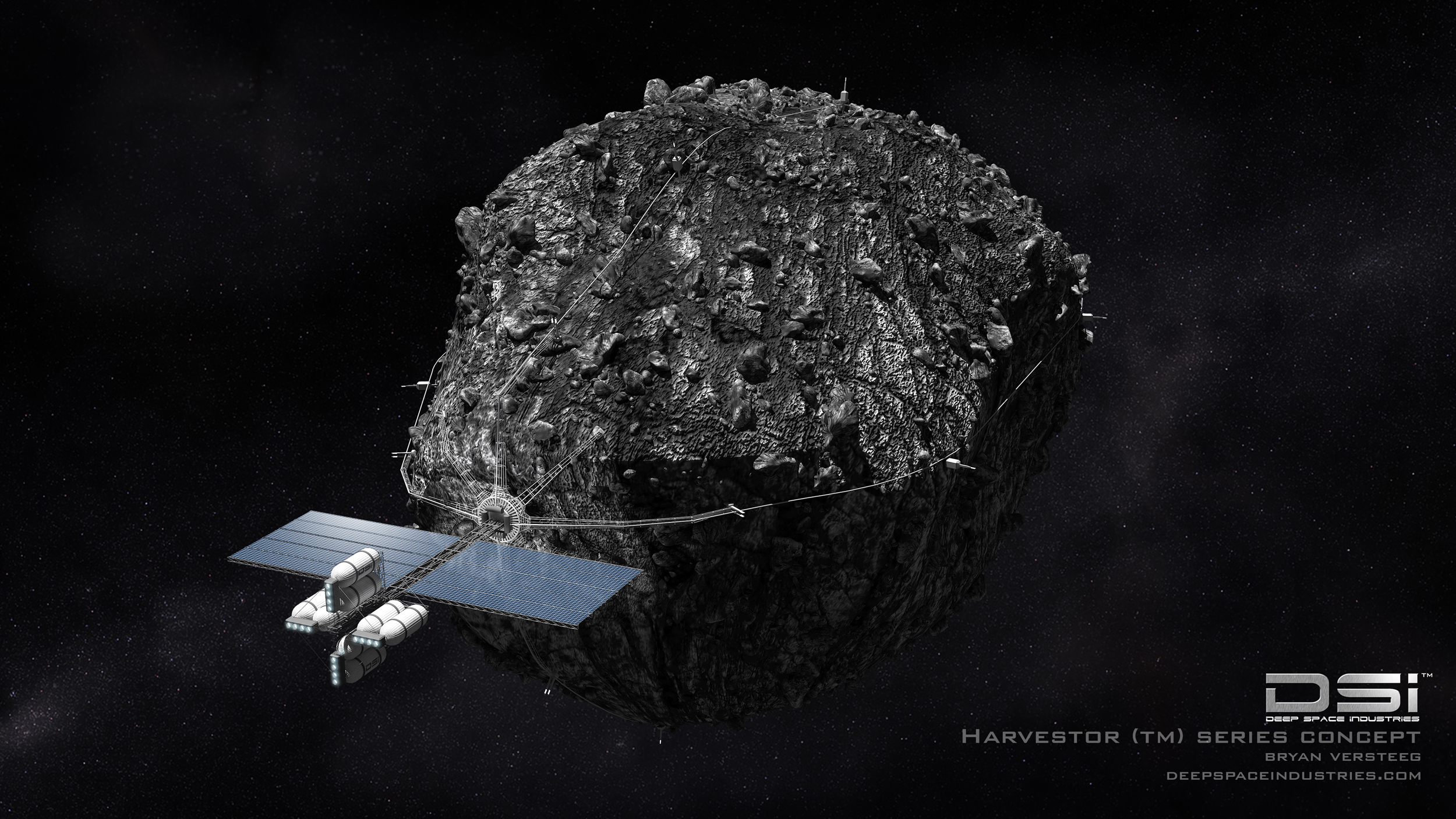
Asteroid mining may become a multispecies affair.
The asteroid-mining firm Deep Space Industries (DSI) is investigating the feasibility of injecting bioengineered microbes into space rocks far from Earth, to get a jump on processing their valuable resources.
"You could come back [to the asteroids] in 10 to 20 years and have a preprocessed pile of materials," Joseph Grace, of DSI and NASA's Ames Research Center, told Space.com last month at the annual fall meeting of the American Geophysical Union (AGU) in San Francisco. [How Asteroid Mining Could Work (Infographic)]
Bacterial injection
The scientists working on the concept envision launching a small probe that DSI is developing, called Mothership, out to a promising near-Earth asteroid in deep space. Mothership would be carrying a number of tiny CubeSats, one of which would deploy and spiral down to the asteroid's surface.
The CubeSat would then inject into the asteroid a low-temperature fluid laden with bacteria, which would propagate through cracks and fissures generated by the injection process. Over time, the microbes — genetically engineered to process metals efficiently — would break down harmful compounds within the asteroid and/or transform resources into different chemical states that are more amenable to extraction.
This work would be slow, but the bacteria would be doing it for free (after the initial expenditure of getting them out to the asteroid, of course).
"The use of self-sustaining biomining mitigates the need for sustained docking, anchoring, drilling, processing or other technically challenging traditional mining approaches," Grace and his colleagues wrote in a poster they presented at AGU. "If shown to function, the use of life to preprocess valuable deep-space resources could change the economic practicality of a large range of human activity in space."
Get the Space.com Newsletter
Breaking space news, the latest updates on rocket launches, skywatching events and more!
Early days yet
Biomining is an established practice here on Earth; a significant portion of the copper extracted on terra firma, for example, is processed with microbial help (though Earth mining uses "wild type" rather than engineered microbes, Grace said). But right now, it's unclear how well the approach can work in space.
The DSI team is trying to bring the picture into clearer focus. For instance, the researchers surveyed data about the 11,000 known near-Earth asteroids (NEAs), to estimate how many of them might have the right interior temperature profiles to support microbial life.
The results, presented in the team's AGU poster, were encouraging: About 2,800 NEAs appear to be potentially habitable, defined as possessing projected interior temperatures that hover between 23 degrees and 212 degrees Fahrenheit (minus 5 to 100 degrees Celsius) for extended periods, without ever exceeding 212 F.
Furthermore, 120 of these asteroids likely have a "preferred" interior temperature, with a range between 59 and 113 F (15 to 45 C) — again, never exceeding 212 F.
The next step involves seeing how well metal-processing microbes can live and metabolize within rock fractures in a vacuum environment. DSI has submitted grant proposals requesting funding to do this work, Grace said.
Mothership, which DSI is developing for a variety of asteroid missions, could be flying within three to four years, Grace said. But full-on asteroid mining is likely still 15 to 20 years away, he added.
DSI is committed to extracting water, metals and other resources from space rocks, whether or not microbial preprocessing is involved, Grace said.
"This is really out there; it's a special project," he said of the bacterial injection idea. "But even if it doesn't pan out, we'll still learn really interesting things about what the limits of life are."
DSI isn't the only asteroid-mining firm; billionaire-backed Planetary Resources also intends to extract water, metals and other materials from space rocks. Doing so could help open up the heavens for exploration, as well as return a tidy profit, representatives of both companies say.
Follow Mike Wall on Twitter @michaeldwall and Google+. Follow us @Spacedotcom, Facebook or Google+. Originally published on Space.com.
Join our Space Forums to keep talking space on the latest missions, night sky and more! And if you have a news tip, correction or comment, let us know at: community@space.com.

Michael Wall is a Senior Space Writer with Space.com and joined the team in 2010. He primarily covers exoplanets, spaceflight and military space, but has been known to dabble in the space art beat. His book about the search for alien life, "Out There," was published on Nov. 13, 2018. Before becoming a science writer, Michael worked as a herpetologist and wildlife biologist. He has a Ph.D. in evolutionary biology from the University of Sydney, Australia, a bachelor's degree from the University of Arizona, and a graduate certificate in science writing from the University of California, Santa Cruz. To find out what his latest project is, you can follow Michael on Twitter.









